Into the Wild West: A Comprehensive Traveler's Guide to Katavi National Park
Katavi National Park is one of Tanzania’s most remote and pristine wilderness areas, offering an authentic safari experience far from crowds and vehicle traffic. Katavi is a wildlife paradise that offers unbelievable wildlife abundance, huge plains, and enormous hippo pools to the adventurous tourists who want to experience nature in its raw and untouched form. Unlike the more popular parks such as Serengeti or Ngorongoro, Katavi remains truly wild and rarely visited, making each game drive feel completely private
This Katavi National Park travel guide contains the most important information on how to reach the park, best time to visit, top attractions, and useful travel tips to enable you maximize your trip to the park. Whether your goal is to witness powerful wildlife moments or to enjoy peaceful solitude in the wild, this guide will ensure you are fully prepared for an unforgettable adventure
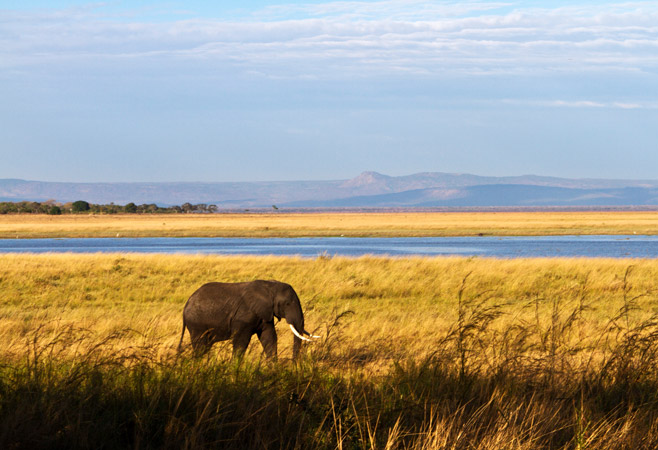
Home to some of the largest herds of buffalo in Tanzania, offering one of the most dramatic wildlife spectacles in East Africa, Katavi National Park is a relatively untouched wilderness paradise, situated in the western area of Tanzania
- Where is Katavi National Park located in Tanzania?
- When to Visit Katavi National Park for Peak Wildlife Sightings
- How to get to Katavi National Park : Mapping Your Safari Route
- Katavi National Park Entrance Fees: Essential Costs & Conservation Charges
- Unforgettable Encounters: The 9 best things to do in Katavi National Park
- 7. Camping Under the Stars
- 8. Cultural Encounters
- 9. Night Game Drives
- Your Home in the Wild: Top Safari Accommodations in Katavi National Park
- The Savvy Traveler's Guide: Top Travel Tips for Katavi National Park
- Conclusion
Where is Katavi National Park located in Tanzania?
Katavi National Park is located in the isolated west of Tanzania in the ecosystem of Katavi-Rukwa. It is situated within the Mpanda District of the Katavi Region which is far from the popular northern safari circuits in the North. The park is surrounded by the large floodplains of the Katuma River and seasonal lakes like Lake Katavi and Lake Chada. It is also among the least-known but purest areas of wilderness in Tanzania due to its isolated position. Frequently, Katavi is reached by a fly-in safari to cities such as Dar es Salaam or Arusha. It is a perfect place that can be visited by people who want to explore an off-the-beaten-path safari adventure
When to Visit Katavi National Park for Peak Wildlife Sightings
Katavi National Park is best visited during the dry season, which spans between June and October since this is the time when the wildlife can be seen at its best. The water bodies dry up during this time and this attracts masses of buffalo, elephants, and antelopes to the pools and riverbeds that are left. There are also more visible predators such as the lion and crocodiles as they flock around these watering points.
On the contrary, the wet season between November and May turns the park into a green haven and the best place to watch birds and take photographs. Nevertheless, there are also places that can be unreachable because of flooding, and the wildlife is more dispersed.
To have the most fulfilling experience of the safari, it is recommended that you schedule your trip during the dry seasons when the sightings at their most dramatic and unforgettable
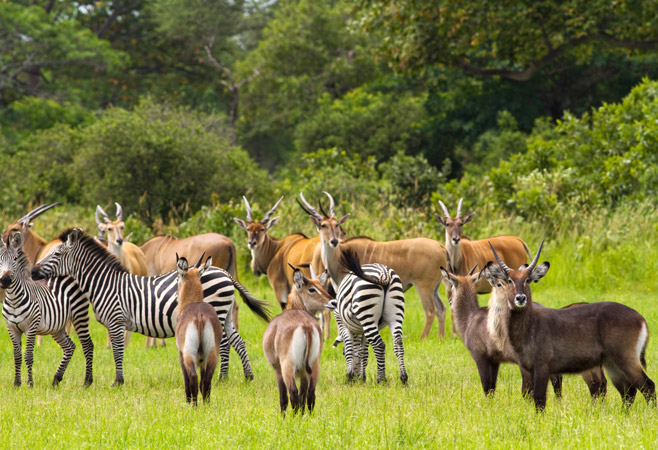
Katavi is one of the country's largest national parks, celebrated for its remote location, abundant wildlife, and diverse ecosystems
How to get to Katavi National Park : Mapping Your Safari Route
Reaching Katavi National Park may prove to be more difficult than traveling to other more established safari destinations in Tanzania but that’s part of the adventure. It is far in the west of the nation, which means fewer visitors and a more untouched wilderness. The tourists will be able to reach the park by air or road depending on the time of the year, budget, and adventure.
1. Getting to Katavi by Air – The Most Convenient Option
The most convenient and quickest method of accessing Katavi is the charter or scheduled flight. Numerous safari operators as well as small airlines will provide flights between major Tanzanian hubs like Dar es Salaam, Arusha and Zanzibar. The flights are normally landed at Ikuu Airstrip or the Mpanda Airstrip that is close to the park.
- Dar es Salaam to Kotavi: About 3 -4 hours.
- Arusha to Katavi: Approximately 4 hours usually through stopovers in Tanzania in either Tabora or Ruaha.
- Flights between Zanzibar and Katavi usually connect via Dar es Salaam or Ruaha, as there are no direct routes
Flights are costly but they have magnificent airplane views of the expansive landscapes of Tanzania and save on a lot of travel time. It is advisable that one reserves with a safari operator because they tend to provide transfers, park entrance charges, and lodging deals.
2. Getting to Katavi by Road – For Adventurous Travelers
Traveling to Katavi by road is possible but only recommended for experienced overland travelers or those on guided expeditions. The road trip between Dar es Salaam or Arusha may require 2 to 3 days covering more than 1,000 kilometers of remote areas.
The most typical one is through Tabora or Mbeya, followed by Mpanda town that is the nearest entry point to the park. It is another 3-4 hour drive on bad dirt tracks through Mpanda to the park.
A 4x4 vehicle is also necessary, in particular, during the rainy season, when roads might be muddy and hard to navigate. Travelling by road is a way to explore the rural part of Tanzania; however, there are not many fuel stations, places to stay and repair stations on the route.
3. Bus and Train Connections
To the budget travelers, it is an adventurous option to get to the park by using a bus or a train, but this is time-consuming and unpredictable. Major cities such as Dar es Salaam, Arusha and Mbeya have their own public buses to Mpanda but the travel is usually a long and crowded affair, where delays are a problem. Although it will be uncomfortable, it is an opportunity to go through the normal life of the Tanzanians in the process.
The other alternative is the Tanzania-Zambia Railway (TAZARA) whichoperates between Dar es Salaam and Mpanda, though schedules can be irregular and delays are common. The train is quite a scenic ride through the countryside and is usually regarded to be safer than the buses traveling across long distances. But times are not regular and time-lags are frequent.
After arrival in Mpanda, the traveler has to hire a 4x4 vehicle in which to access the park because there is no direct transport to the gates accessible by the masses. This is the road to go when the traveler is on an adventure and believes in experience rather than convenience.
4. Combined Safari Routes
Most tourists accompany Katavi with the surrounding parks like Mahale Mountains National Park, which is popular in chimpanzee trekking. The western Tanzania safari circuit is a very unique experience because flights usually link Katavi with Mahale.
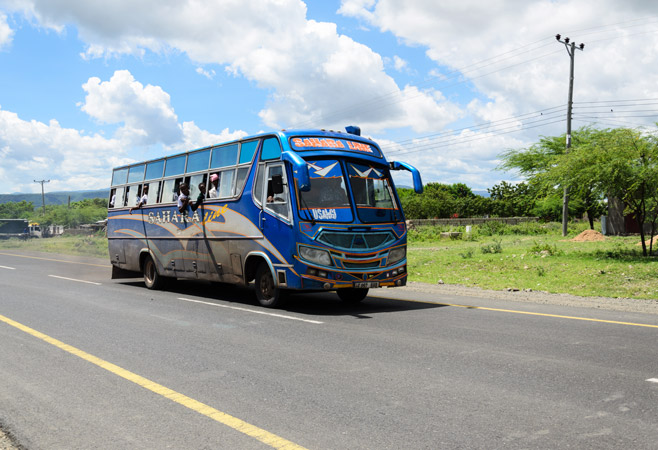
The most common way to access the park is by charter flight from Arusha, Dar es Salaam, or other major Tanzanian cities to the park’s airstrip
Katavi National Park Entrance Fees: Essential Costs & Conservation Charges
Entrance fee
To plan a safari in Katavi National Park, one needs to be aware of the park fees charged by Tanzania National Parks Authority (TANAPA). These fees help protect wildlife and maintain park infrastructure. Fees depend on nationality, age, vehicle type, and whether you stay inside the park
Below is a general overview of entrance fees:
|
Category |
Fee (Per Person / Per Day) |
| Non-Resident Adult | USD 50 |
| Non-Resident Child (5–15 yrs) | USD 10 |
| East African Resident Adult | TZS 15,000 |
| East African Resident Child (5–15 yrs) | TZS 5,000 |
| Tanzanian Citizen (Adult) | TZS 10,000 |
| Tanzanian Citizen (Child) | TZS 2,000 |
| Vehicle Entry (Foreign Registered) | USD 40 per vehicle |
| Vehicle Entry (Tanzanian Registered) | TZS 20,000 |
Special Activities & Conservation Fees
|
Activity |
Fee (per person, unless noted) |
| Walking Safari (Guided) | USD 20 per person |
| Night Game Drive (available only with authorized lodges and TANAPA permits) | USD 30 per person |
| Concession Fee (per person / night) | USD 20–40 (varies by lodge) |
| Filming / Photography Permit | By request (rates vary) |
Important Notes
- No cash at the gate – Payments via TANAPA Smart Card or tour operator.
- Children under 5 years – Free entry.
- Park fees are charged per day – Early entry and exit must follow TANAPA time rules.
- Peak season rates may apply at exclusive lodges.
Knowing such costs will assist you in budgeting properly and will make your entrance into one of the most remote and rewarding Tanzania safari destinations a smooth one.
Opening Hours
Katavi National Park is accessible all year round and open daily from 06:00 to 18:00. Visitors must enter and leave the park during these hours because at night visitors may not enter the park unless they have a special and pre-booked event like a guided night game drive. The gates to the parks normally open in the morning at the time the sun is rising, and thus, it is best to view the animals in the early mornings when they are in their peak activity.
Operating hours may vary slightly depending on weather conditions and TANAPA regulations. Visitors should confirm exact timings with their lodge or tour operator to avoid any inconvenience. The late entry is not usually allowed, which is why getting to the wilderness early is a guarantee of a hassle-free check-in and the maximum amount of time to enjoy it. Finally, remember to carry valid identification and proof of park fee payment at the gate
Unforgettable Encounters: The 9 best things to do in Katavi National Park
Although Katavi National Park is one of the most remote safari parks in Tanzania, it is an excellent place to experience nature in its rawest and most authentic form with a diversity of activities that are not common. To explore the 9 best things to do in Katavi national park, this list will include the most fulfilling activities that will help you to expand on the untamed nature that is so rough yet so beautiful. Katavi is home to truly wild animals and the untouched nature in the form of wildlife herds and scenery devoid of tourists.
1. Game Drives Across the Katuma Floodplains
Game drives within the expansive Katuma Floodplains remain, by far, among the top things to do in Katavi National Park, providing incredible wildlife experiences in one of the least disturbed wilderness in Tanzania. Thousands of animals gather around the remaining water sources, creating dramatic scenes found in few other parks. Huge buffalo, elephant and antelope herds control the plains and are closely pursued by the predators including lions and hyenas. Drives at early morning and late afternoons are particularly fulfilling and the golden light only adds to the safari experience.
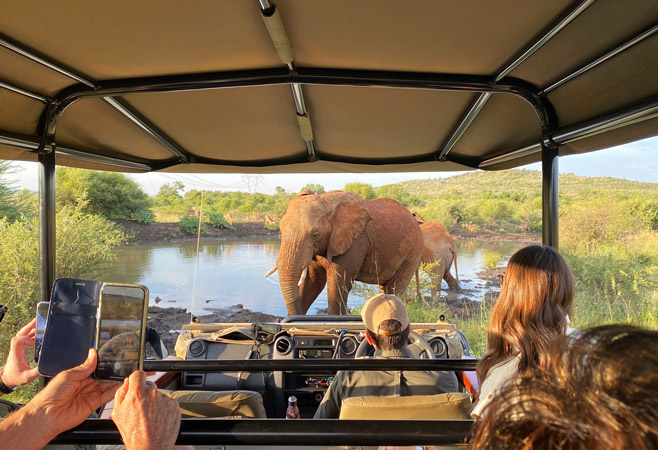
Game drives are a quintessential Tanzania safari activity, allowing you to explore Katavi National Park's diverse wildlife in comfort
2. Witness the Famous Hippo Pools at Ikuu
The gathering of hundreds of hippos on the remaining pools of the Katuma River is one of the most outstanding scenes in Katavi. When it is dry to the extreme, hippos have to squeeze into small areas where they compete in order to conquer their territories, and massive crocodiles lurk nearby, adding to the intensity of the spectacle. It is a spectacle that is gritty, intense and memorable.
3. Walking Safaris with Armed Rangers
Walking safaris in Katavi are a unique experience where one gets a chance to be in the wilderness with armed TANAPA rangers to guide them. Walking on foot allows you to observe finer details than going on game drives, you can see the finer details of the game- animal tracks, birdsong, and even the smell of the wild sage in the air. It is a a deeply immersive, nature-connected experience that is closer to the wild than when in a car.
Ground level experience with giraffes, zebras, or antelopes make incredible memories. Rangers tell stories of how to survive, plants and the fragile balance of the ecosystem. Walking safaris are some of the most exciting and personal experiences of visiting the untouched territories of Katavi by the people who want to experience the raw adventure.
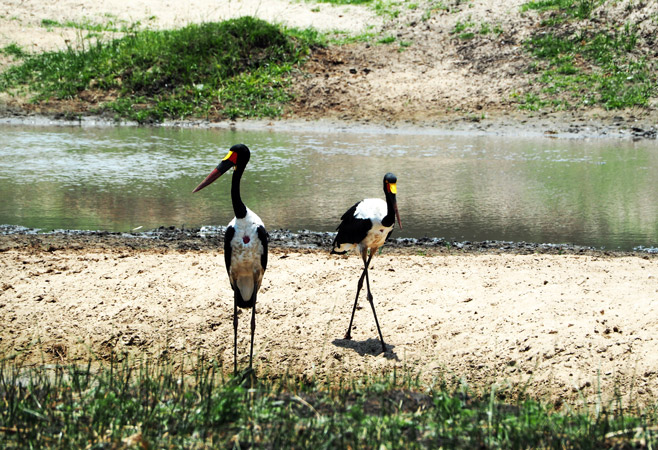
Walking safaris are a unique and exhilarating Tanzania safari activity that allows you to connect deeply with the environment
4. Birdwatching in Wet Season
Katavi is a haven for birdwatchers, particularly during the wet season, when the floodplains become colorful wetlands. More than 400 species of birds can be found in the park such as saddle-billed stork, African fish eagle, crowned crane and migratory waterbirds. The rich scenery and the tranquility of the area provide the best views of both endemic and migratory species. Whether you are an avid birder or a casual observer, but whatever you are, Katavi is the place where you will have the best chances of seeing rare and colorful bird species in the wild without the crowds found in other safari parks
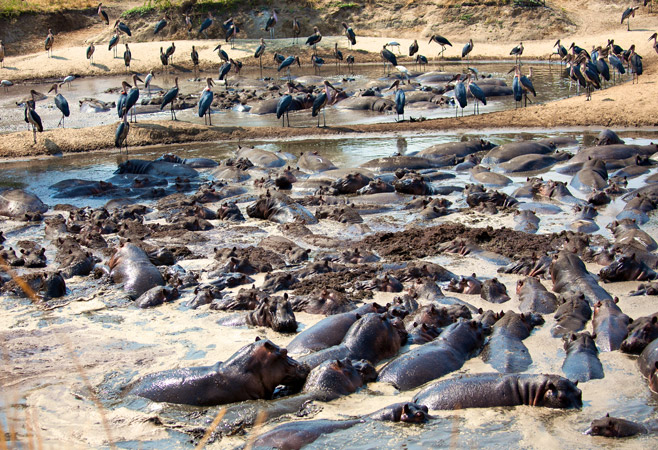
This diverse avian population includes both resident and migratory birds, making it a paradise for bird enthusiasts
5. Visit Lake Katavi and the Katavi Spirit Site
Lake Katavi and the Katavi Spirit Site is a distinct nature-culture mix, which tourists will experience once they visit the location. It is a holy place that is deeply embedded in local beliefs and it is claimed that the spirit of Katabi, who used to be offered offerings, safeguards it.
The lake hosts various fauna and flora such as hippos, crocodiles and a wide variety of birds and thus is an interesting and serene visit on a safari. In addition to wildlife observation, the site encourages one to meditate on the spiritual relationship that the local communities have with the land. It becomes part of your culture adventure with Katavi.
6. Photography and Filming Opportunities
Taking photographs and filming in Katavi National Park provide unique opportunities to see the beauty of Africa without interruptions of crowds and people. It has a remote location that stunts the dramatic scenes, dust clouds appearing out of giant buffalo herds, hippos crowded into shrinking pools, and predators hunting its prey over open plains.
Sunset and sunrise give the ideal golden light, which is suitable in wildlife and landscape photography. Be it a professional photographer or a traveler, Katavi provides the images that cannot be captured anywhere else but the real wilderness. Patience rewards photographers with dramatic and untamed scenes
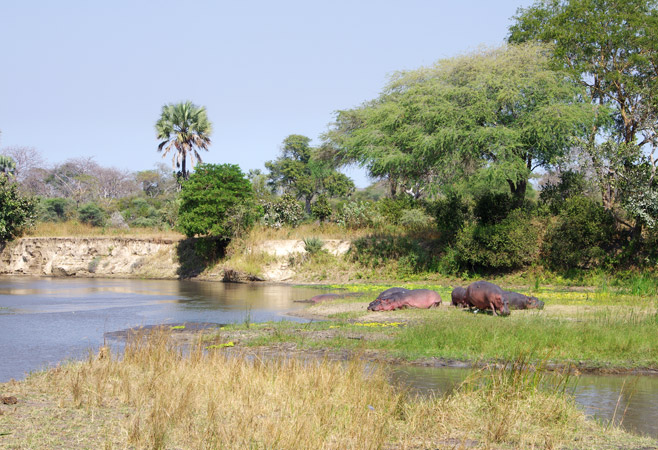
From the dramatic landscapes to the vibrant wildlife, Katavi is a photographer’s paradise
7. Camping Under the Stars
Camping in Katavi has one of the best authentic and raw wilderness in Africa. The remote area of Katavi also enables campers to enjoy their nights in the company of pure silence with the only distraction of far roaring lions or hippo grunts. TANAPA operates public and special camping facilities with simple facilities, and also, exclusive mobile camp operators are offering fully serviced safari camps in wild environments.
By waking up in Katavi, one can see the sunrise at the vast plains and can already watch wildlife traverse the savannah. Evenings by the camp fire with a star-filled sky form profound relationships with nature which are incomparable with those which a lodge can offer. To wilderness lovers, camping does not simply mean accommodation, it is a powerful reminder of life in true wilderness in the real African wilderness.
8. Cultural Encounters
Katavi does not only have beautiful nature. The site is replete with rich cultural history and some of the holy sites are worth visiting. Among the most interesting sites is the Katabi Tree, a sacred tamarind tree around Lake Katvi, where local folklore claims that the local spirit, the Wabende, Katabi, lives. Numerous visitors leave offerings at the sacred Katabi Tree in search of the blessing of the spirit.
9. Night Game Drives
To have a totally different safari tour, embark on a night game drive. The park wildlife at night is equally interesting as the daytime wildlife. The predators such as lions, leopards, and others are more active at night, and the safari guides in the park are highly experienced guides on the hunting of such elusive animals.
Your Home in the Wild: Top Safari Accommodations in Katavi National Park
When visiting such a remote and untouched destination, choosing the right place to stay becomes essential. Although Katavi has not been as commercialized as the other Tanzanian parks, it has a few exclusive and unusual safari lodges and camps that offer comfort, exclusivity, and a close-up view of animals. When looking at the best accommodation in Katavi National Park, the following are the best places to stay in Katavi National Park which are a mix of wilderness, luxury and adventure.
1. Katavi Wildlife Camp
Katavi Wildlife Camp is a well-known safari camp within the park, which provides traditional tented camps with an amazing view of the Katisunga Plains. The tents are also set on wood and furnished with comfortable beds, en suite bathrooms, and verandas where one can view wildlife. The visitors can observe buffalo and elephant herds directly in the camp. This camp provides a classic look of the safari with bush dining and guides game drives.
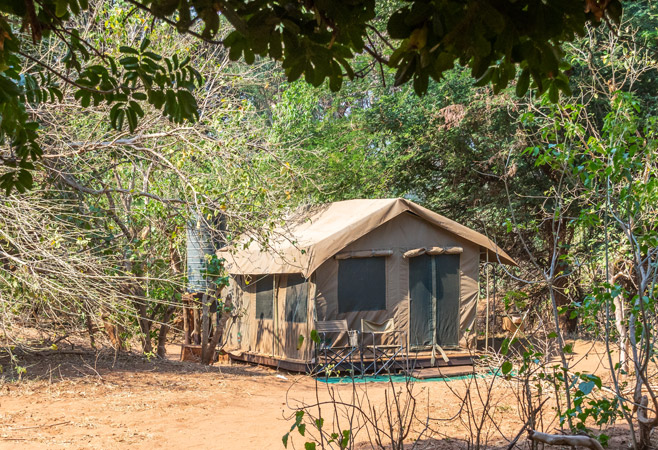
Katavi Wildlife Camp offers a remote, intimate safari with high wildlife concentration, including large buffalo herds, and rare species, in a secluded area
2. Chada Katavi Camp
Chada Katavi Camp is a luxury tented camp situated in the Katavi National Park and run by Nomad Tanzania to provide an experience to tourists who are looking to have exclusivity and maximum experience in nature. The camp is located under acacia trees, and the tents are large in size, with open-air bathrooms and personal decks. The camp specializes in walking safari and fly-camping, which involves staying under the stars in mosquito net tents. Chada has been commonly acclaimed with its outstanding service and close wilderness, being one of the top destinations to stay in Katavi National Park.
3. Mbali Mbali Katavi Lodge
Mbali Mbali Katavi is a combination of upscale convenience and wilderness. It is situated close to Chada floodplains and it has chalet-style rooms having en suite facilities and expansive verandah facing seasonal lakes. The lodge has the complete safari packages which include the game drives, the sundowners and cultural experiences. Its peaceful location is like heaven to the travelers who want to have a relaxing treat after a day of wildlife-threatening experiences.
4. TANAPA Public and Special Campsites.
For self-sufficient travelers or adventure seekers, the most primitive and untamed experience is provided by the public and special camping sites of the park. These campsites require visitors to be fully self-sufficient and are managed by TANAPA and offer rewarding nights in the African bush to the visitors. The special campsites should also be reserved in advance and are located in remote locations, which are ideal to have personal expeditions and camping under the stars.
The Savvy Traveler's Guide: Top Travel Tips for Katavi National Park
To ensure your trip is safe and unforgettable, it is very important to prepare well in advance. The following are the necessary tips on how to travel when touring the wild heart of the Katavi National Park.
1. Transportation and Access
Katavi is not close to big cities, which is why the best option is charter flights taking place in Dar es Salaam, Arusha, or Zanzibar. By road, one can travel however this would take them several days and a good 4x4. Going over land, then taking more fuel, spare tires and supplies, the services are scarce on the road.
2. Accommodation Booking
The Katavi lodges and camps are minimal and many are seasonal and hence booking in advance is necessary. Whether you plan to stay in a luxury tented camp such as Chada Katavi or at one of the public campsites managed by TANAPA, it is advisable to reserve your stay several months ahead, especially during peak season. In the case of the campers, you should bring your own equipment and food unless you have booked them through a tour operator.
3. Health, Safety, and Money
Malaria Prophylaxis: Katavi lies in a malaria zone—consult your doctor for anti-malarial medication and carry insect repellent
Park Fees: There are conservation and concession fees (to stay over) which are high and typically paid in USD. Although the majority of the common expenses are covered by your package, carry with you small denominations of Tanzanian Shillings (TZS) and/or US dollars to tip staff and guides.
4. Park Rules and Payments
Katavi is under TANAPA regulations. Camping fees, entrance fees, and fees to carry out activities are normally paid through electronic systems — cash is not accepted at the park gates. Always keep your payment receipts and identification for verification at the gate. Admire wild creatures and keep a safe distance when viewing.
5. Packing Essentials
Bring neutral-colored lightweight clothing, a broad-brimmed hat, binoculars or a good digital camera with spare batteries or hard drives. It can also be cold at night during the dry season so bring a warm layer or jacket. If camping, bring a headlamp or torch, as lighting is limited

Pack appropriate clothing for varying weather conditions, including lightweight and breathable clothing for daytime and warmer layers for cooler evenings
6. Combine with Mahale Mountains
To enhance the experience, most tourists combine Katavi and Mahale Mountains National Park where chimpanzees trek. Both locations are regularly connected by charter flights, and are a rare combination of a rare combination of big-game viewing and chimpanzee trekking
Conclusion
Exploring Katavi National Park is not just a safari—it is a journey into one of Africa’s last untouched wilderness areas. With massive herds of buffalo, theatric hippo pools, peaceful floodplains and starlit camping grounds, Katavi is a place that few would rival. This Katavi National Park tour guide has also mentioned the key information to plan your adventure, when and how to visit it, what to do there, what to stay at and the most important travel tips. Katavi will leave an indelible mark on your mind whether you are after some seclusion, a close encounter with wilderness or capturing images.
Before traveling, be sure to apply for your Tanzania eVisa online to have a hassle-free and stress-free experience of getting to the country. Your Tanzania visa is granted, your itinerary is made, and now you can see the untamed beauty of Katavi: here nature is still in its purest form. The memories you create here will last a lifetime
Related Articles
- Top 15 Churches To Visit in Tanzania That Blend Beauty and History
- The Great Migration Tanzania Safari: A Complete Guide to the World’s Greatest Wildlife Show
- Ultimate Mtwara Tanzania Travel Guide: Best Things to Do and How to Plan Your Trip
- Tanzania Family Holiday Guide: Creating Memories That Last a Lifetime
- Tanzania Tourist e-Visa for First-Time Travelers: A Complete Online Application Guide
- A Complete Guide to Shopping in Zanzibar: What to Buy and Where to Find It
- The Ultimate List of the Best Restaurants in Nungwi for Fresh Seafood and Ocean Views
- The Ultimate Singida Travel Guide: Planning Your Trip to Central Tanzania
- Beyond Parliament: Discover the 13 Best Restaurants in Dodoma Serving Amazing Food











